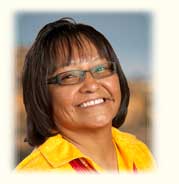Hopi Artists
Hopi art has evolved over thousands of years and Hopi artists are among the most accomplished in the world. There are four primary art forms in Hopi: Pottery, Carving, Basketry/Weaving, and Silversmithing/Jewelry. The artists have all learned from mentors, usually family members and this tradition of mentoring continues today. Artists from all villages across the Hopi mesas carve Katsina Dolls but the other art forms are the specialty of particular villages on First, Second, or Third Mesas.
BASKETRY/WEAVING
Hopi baskets are derived from techniques that can be traced back to Indians of the Southwest for thousands of years. Hopi artists produce plaques, bowls, and trays for sale as well as for ceremonial use. Artists from Third Mesa are known for basketry and weaving. Read more.
CARVING / KATSINAS
These carvings are called "dolls," but they are actually three dimensional representations of the Kachinas who visit the villages for religious and ceremonial reasons. They are carved from cottonwood root and painted to represent figures from Hopi mythology and have been used for generations to teach the Hopi children about their religion and culture. Read more.
POTTERY
The design and artistic decoration of Hopi pottery has evolved over the centuries and most Hopi pottery comes from artists on First Mesa. Hopi pottery is made with the “coil and scrape” technique with clay that is hand dug on Hopi land. Surface designs are painted in natural pigments with a yucca leaf brush, and the pots are fired in open pits with sheep dung and cedar as fuel. Read more.
JEWELRY & SILVERWORK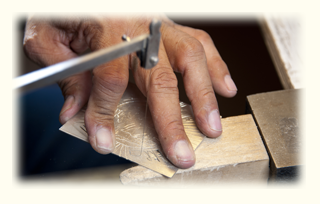
Silverworking was introduced to the Hopi in the late nineteenth century. Sikyatala, from the First Mesa village of Sichomovi, learned the craft from Zuni silversmith Lanyade. The most widely known silver work is the process of silver overlay which was developed by Hopi artists after World war II. The artist cuts a design from one flat piece of silver and then fuses that piece to a darker oxidized one that is scored or incised to produce a fine texture. The upper piece is then polished or buffed and the finished pieces of art have a uniquely Hopi character predominantly from Second Mesa. Read more.
Emerson Ami
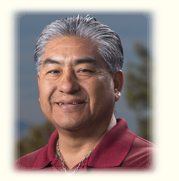
First Mesa
Tewa Village
Pottery
Primary Number: (928) 737-0113
Secondary Number: (928) 401-0941
P.O. Box 215, Polacca, AZ 86042
This email address is being protected from spambots. You need JavaScript enabled to view it.
Dorothy Ami
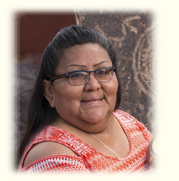
First Mesa
Tewa Village
Pottery
Primary Number: (928) 737-0113
Secondary Number: (928) 401-0941
P.O. Box 215, Polacca, AZ 86042
This email address is being protected from spambots. You need JavaScript enabled to view it.
Potters & Clay Artists
Hopi potters draw on a tradition going back centuries. The ancestors of the Hopi made gray utility ware as long ago as A.D. 700. The ancient potters developed black on white styles, black on red, and finally polychromes. In the late '1800s, outsiders began to appreciate the artistry of Hopi potters. This new demand sparked what has been called the revival period for Hopi pottery.
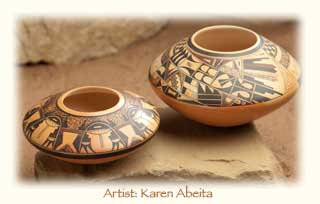 The ancient potters passed their skills on to succeeding generations, many of whom are Hopi potters today. Although First Mesa is the most well-known for its pottery, Hopi potters can be found throughout the Hopi mesas. All authentic Hopi pottery is handmade by the coil and scrape technique. Hopi potters do not use a pottery wheel or make mold-poured pottery. They use the same techniques as their ancestors, hand-painting the designs with yucca leaf brushes and using natural materials provided by their environment. The pots are then fired in open firing areas.
The ancient potters passed their skills on to succeeding generations, many of whom are Hopi potters today. Although First Mesa is the most well-known for its pottery, Hopi potters can be found throughout the Hopi mesas. All authentic Hopi pottery is handmade by the coil and scrape technique. Hopi potters do not use a pottery wheel or make mold-poured pottery. They use the same techniques as their ancestors, hand-painting the designs with yucca leaf brushes and using natural materials provided by their environment. The pots are then fired in open firing areas.
History
The Hopi call their ancestors, Hisatsinom, "People of Long Ago." The public and most anthropologists refer to these people as the "Anasazi," a word that has become popular in the general literature. Early Hisatsinom are called the Basketmaker people. The Basketmakers were a hunting and gathering people who became increasingly sedentary as their reliance on agriculture increased. As early as A.D. 700, the Basketmaker people began making plain pottery.
Increased corn-based agriculture and increased occupation of multi-roomed pueblo dwellings was accompanied by an increase in the quantity and variety of pottery manufactured by these people. From Pueblo I through early Pueblo III (A.D. 800 to 1300), pottery with black painted designs on white slip was being made everywhere in the Pueblo world. Two of the early black on white styles from the Hopi mesas were Kana-a and Black Mesa. These were followed in the Pueblo II era by Dogoszhi and Sosi. Later styles that were made in early Pueblo III were Flagstaff, Tusayan, and Kayenta. Each has its own distinctive and identifiable design motif.
Four red ware traditions were also developed at this time. These designs were usually black, though sometimes white, on a background of red or orange slip. These were San Juan Red Ware, Tsegi Orange Ware, White Mountain Red Ware, and Show Low Red Ware.
In the Pueblo III period (about 1300), polychromes first appeared. Pueblo potters began to express a wide variety of colors, design styles, and vessel forms. The culmination of the Hopi polychromes was Sikyatki Polychrome, which flourished from A.D. 1400 to 1600. Later polychrome in the Hopi area included Payupki, Walpi, Polacca, and San Bernardo types. In the late 1800s, outsiders became interested in Hopi pottery, and a revival in pottery production was sparked by the work of Nampeyo and other First Mesa potters. They reproduced the beautiful Sikyatki Polychrome styles and handed down their skills. Most contemporary pottery is made on First Mesa.
Modern
Modern Hopi potters make their pottery in the traditional manner. The clay is hand dug on the Hopi mesas and hand processed. The pots are carefully hand constructed using the coil and scrape techniques their ancestors taught them. The paints used are from naturally occuring materials. For example, black paint is made by boiling Beeweed for a long time until it becomes very dark and thick. It is then dried into little cakes which are wrapped in corn husk until ready for use. It is called guaco.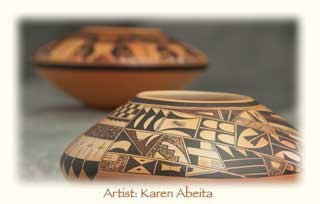
The intricate and beautiful designs are painted free hand using a yucca leaf brush. The pots are then fired in the open air out on the mesa using sheep dung and cedar as a heat source. Prehistoric potters did not have domestic animals to provide dung, but modern potters prefer it for its rapid, even heat.
Some Hopi pottery is ceremonial in nature and not intended for public consumption. You will not find this kind of pottery for sale in reputable galleries and shops. Most prehistoric pottery has been taken from burial contexts, and the Hopi people find non-Hopi ownership of these pots offensive. It is better not to buy prehistoric pottery.
Valerie Namoki
First Mesa |
Tewa Village |
Kachina/ Parrot Clan |
Pottery |
Valerie Namoki
| (928) 613-0919 |
|
|
This email address is being protected from spambots. You need JavaScript enabled to view it. |
Mavasta Honyouti

| Third Mesa |
| Hotevilla Village |
| Coyote Clan |
| Pottery, Carving |
Come experience a new approach to an ancient art form. Through the teachings of a long line of master carvers, up and coming artist Mavasta Honyouti uniquely combines the traditional style of carving while integrating contemporary techniques. All of the pieces Mavasta creates embody the essence of nature, family, and prayer, through the journey of spirituality.
(928) 380-5385 |
This email address is being protected from spambots. You need JavaScript enabled to view it. |
www.mhonyouti.com |
P.O. Box 729Hotevilla, AZ, 86030 |
Lawrence Namoki
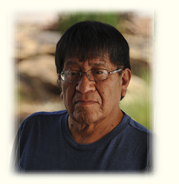
First Mesa
Tewa Village
Pottery
(928) 737-2090
P.O. Box 689 Polacca, AZ 86043
This email address is being protected from spambots. You need JavaScript enabled to view it.
Karen Abeita
First Mesa |
Tewa Village |
Kachina/ Parrot Clan |
Pottery |
Karen Abeita was born of a Tewa mother and Isleta father. She is one of the finest young Hopi potters working today. She particularly likes using some of the older designs on her pots -the Palhik Mana - (Butterfly Maiden) pottery sherds, feathers, eagle tail feather skirt, clouds, and song birds. Karen works particularly hard on her outdoor firing techniques - aiming to have a certain warm glow with the use of fire clouds. Her work is some of the very finest produced at Hopi today. Her use of fire clouds to produce soft changes in hue in her works creates an exceptionally rich and warm design. All of Karen's pottery is completely traditional from gathering the clay from the Hopi Reservation to hand coiling, hand polishing , hand painting than firing the old fashioned way – outdoors. Karen has won numerous awards – including Best of Show, "Invitational," Lawrence, KS. She is in all the major books recently published on Hopi pottery, including Gregory Schaaf's book Hopi–Tewa Pottery 500 Artist Biographies. She has signed with her name "Karen Abeita" and her parrot clan hallmark.
(928) 737-0194 |
P.O. Box 696Polacca, AZ 86043 |
This email address is being protected from spambots. You need JavaScript enabled to view it. |
Darlene James

Lower Polacca Village
Pottery
P.O. Box 653, Polacca, AZ 86042
This email address is being protected from spambots. You need JavaScript enabled to view it.
I’ve been an artist most of my life. I have an attraction to the natural environment, like the landscape, colors of the earth, the sunrise and sunset. My ideas and inspirations come from spending time outside looking at my surroundings. I grew up around my maternal grandmother, Rachel Namingha, she worked on her pottery almost everyday so this is how I learned the pottery making process after school and during the summer months.
“The pottery becomes a part of the artist. I work with clay to form pots and I respect the clay for being on this earth for the people to use. I honor my ancestors for what they left behind and for giving us the knowledge to keep up the traditions.”
Lydia Huma Mahle
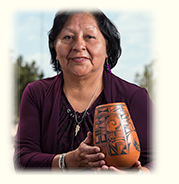
First Mesa
Tewa Village
Pottery
(928) 737-9281
P.O. Box 689 Polacca, AZ 86043
Carvings
Katsina Dolls
Small brightly painted wooden dolls are what come to mind when people hear the word Katsina. These dolls are actually called tithu by the Hopi people. They are referred to as katsintithu when a more specific term is needed.
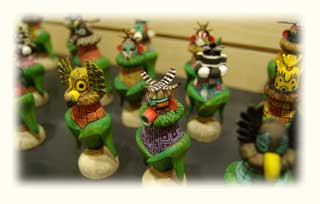 Katsina primarily refers to the supernatural beings who are believed to visit Hopi villagers during half of the year. Katsinas have the power to bring rain, exercise control over the weather, help in many of the everyday activities of the villagers, punish offenders of ceremonial or social laws, and, in general, to function as messengers between the spiritual domain and mortals. Katsinas are spiritual messengers.
Katsina primarily refers to the supernatural beings who are believed to visit Hopi villagers during half of the year. Katsinas have the power to bring rain, exercise control over the weather, help in many of the everyday activities of the villagers, punish offenders of ceremonial or social laws, and, in general, to function as messengers between the spiritual domain and mortals. Katsinas are spiritual messengers.
The tithu are given to girls and new brides on dance days during which gifts are given by the Katsinas. The children take them home and through them learn what each Katsina looks like. The tithu are used to teach children about the different Hopi Katsinas.
From a Hopi perspective, tithu that are carved by people who are not Hopi are not katsina dolls. A Hopi carver tries to fashion a doll that conforms . . . to the attributes of the Katsina, as taught in religious training. A skilled carver knows the attributes and distinctive characteristics of a particular Katsina and conveys the essence of the Katsina in the carved figure . . . Dolls carved by those not familiar with Hopi religion do not convey the proper feeling and, to Hopis, they look wrong.
Nuvadi Dawahoya
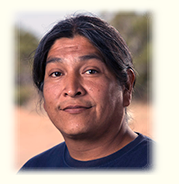
Second Mesa
Shungopovi Village
Carving
Primary Phone:(928)313-4001
Secondary Phone:(928)401-8387
P.O. Box 625, Polacca, AZ 86042
This email address is being protected from spambots. You need JavaScript enabled to view it.
Michael George
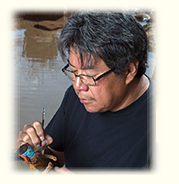
Third Mesa
Hotevilla Village
Carving
(480)512-9675
P.O. Box 864, Tuba City, AZ 86045
This email address is being protected from spambots. You need JavaScript enabled to view it.
Wally Grover
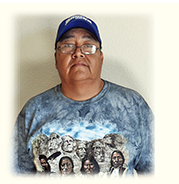
First Mesa
Tewa Village
Carving
(928) 613-8452
P.O. Box 671, Polacca, AZ 86042
This email address is being protected from spambots. You need JavaScript enabled to view it.
Many people throughout the world practice many different forms of art. Forms of art may be foreign to a person, but some forms of art may be part of their very own culture. Wally Grover, Hopi/Tewa, from Polacca, Arizona practices a form of art native to his culture. He is a self-employed kachina doll/sculpture carver and provides for his family with his creative work.
Wally was introduced to this form of art when he was eighteen years old by his brother-in-law, Marlon Huma whom is also a well-known kachina doll carver. Wally carves using the roots of a cottonwood tree. His tools consist of a pocketknife, coping saw, wood burner, sandpaper, paintbrushes, linseed oil and acrylic paint.
Wally has attended many Native American art shows throughout Arizona.
Loren Qumawunu

Second Mesa
Sungopavi Village
Jewelry
Primary Number: (928) 737-0274
Secondary Number: (928) 613-7281
P.O. Box 484, Second Mesa, AZ 86043
This email address is being protected from spambots. You need JavaScript enabled to view it.
Lucion Koinva

Second Mesa
Shungopavii Village
Jewelry
P.O. Box 312, Second Mesa, AZ 86043
This email address is being protected from spambots. You need JavaScript enabled to view it.
Silversmiths
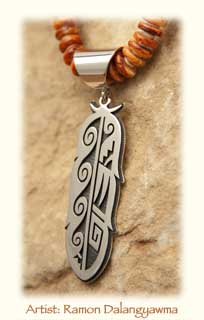
Hopi life and religion are reflected in their jewelry. Designs have a religious or secular meaning and can be highly symbolic or realistic. Designs are usually based on ancient sources such as potsherds, petroglyphs, or Katsinas.
The overlay technique is characteristic of most Hopi jewelry. The design is cut out of a flat piece of silver; the background is textured and oxidized to turn it black. Often stones such as jet, coral, or turquoise are used to add emphasis to the outstanding silvercraft produced by the Hopi.
To insure authenticity, Hopi jewelry is marked by the artist's clan, signature, or village. The Hopi Arts and Crafts Silvercraft Cooperative Guild located on Second Mesa is a non-profit membership organization that helps members promote their arts and crafts. 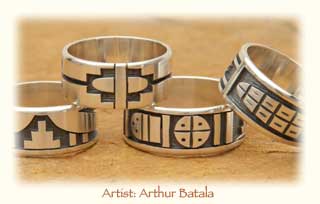 The Guild has been instrumental in training individuals who now sell their own work in private shops located throughout the mesas. Jewelry sold through the Guild is marked with the sun symbol and the clan mark of the individual artist. Further information can be obtained by contacting this organization.
The Guild has been instrumental in training individuals who now sell their own work in private shops located throughout the mesas. Jewelry sold through the Guild is marked with the sun symbol and the clan mark of the individual artist. Further information can be obtained by contacting this organization.
Roy Talahaftewa
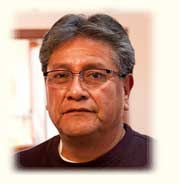
Second Mesa
Bacavi Village
Silversmith
(928) 734-9262
P.O. Box 25, Second Mesa, AZ 86043
Many people throughout the world practice many different forms of art. Forms of art may be foreign to a person, but some forms of art may be part of their very own culture. Wally Grover, Hopi/Tewa, from Polacca, Arizona practices a form of art native to his culture. He is a self-employed kachina doll/sculpture carver and provides for his family with his creative work.
Wally was introduced to this form of art when he was eighteen years old by his brother-in-law, Marlon Huma whom is also a well-known kachina doll carver. Wally carves using the roots of a cottonwood tree. His tools consist of a pocketknife, coping saw, wood burner, sandpaper, paintbrushes, linseed oil and acrylic paint.
Wally has attended many Native American art shows throughout Arizona.
Ramon Dalangyawma

Third Mesa
Hotevilla Village
Jewelry
Phone: (928) 401-0453
Cell: (928) 734-0333
P.O. Box 183 Hotevilla, AZ 86030
This email address is being protected from spambots. You need JavaScript enabled to view it.
Ramon moved from the pueblo to study at the IAIA school in Santa Fe for two years, transferring to Phoenix Indian High School high school, where he graduated in 1972. After high school, he enlisted in the Marine Corps. He was promoted from Private to Corporal taking his training at the Communications school in Twenty Nine Palms, California. He says that President Nixon is his "big hero" because it was his decision to begin the withdrawal of troops from Viet Nam that kept him from being shipped overseas as a Field Radio Operator. Ramon completed a 12 month tour on Okinawa, in the pacific, and after the military, he worked for a short time with the Bureau of Indian Affairs in Tuba City.
Ramon returned to Hotevilla in 1978 and began Silver work at the Hopi Arts and Crafts center. Working in copper, brass, and bronze, he signed his earliest work with stylized initials RA. (Ramon Albert) Many of Ramon's works went unsold because they lacked a distinguishable Hopi surname. Like his father before him, Ramon was named after the son of Lorenzo Hubbell, who owned and operated the New Oraibi Trading Post. His grandmother gave Ramon Albert, Jr. the Hopi name Dalangyawma, which he has adopted as his hallmark. Ramon sells most of his jewelry at Indian art and craft fairs.
Ramon's designs often reflect his Hopi culture. Designs such as clouds, thunderbolts, and rain reflect the importance of weather in an area where there is no irrigation. Clan symbols, such as the bear, spider, and antelope, mixed with prayer feathers, kachinas, Kokopelli and corn are all combined in Ramon's work. Ramon dislikes doing the smaller pieces not because of limited space for his hallmark, but because holding and cutting small pieces of silver is difficult and tedious. He prefers to work on larger items.








